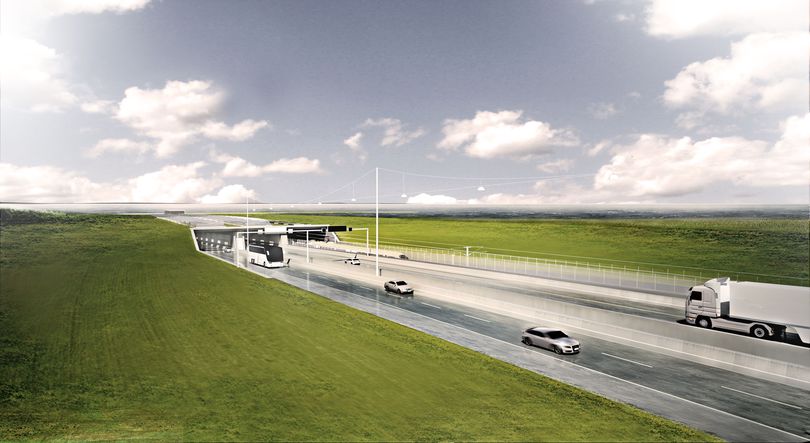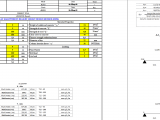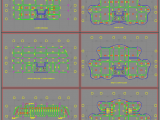
The Fehmarnbelt Fixed Link: More Than a Tunnel, It’s Europe’s New Artery
19 July 2025Table of Contents
The Fehmarnbelt Fixed Link: More Than a Tunnel, It’s Europe’s New Artery
In the pantheon of modern megaprojects, few are as ambitious or as consequential as the Fehmarnbelt Fixed Link. This 18-kilometer marvel of engineering will forge a direct connection between Denmark and Germany, creating the world’s longest immersed road and rail tunnel. While news outlets focus on the remarkable reduction in travel time, we at The Engineering Community are taking a deeper look. We’re going under the water and inside the factory to analyze the critical engineering decisions, the groundbreaking technologies, and the sheer logistical mastery required to construct this new strategic artery for Europe.
This is more than a story about a tunnel. It’s a case study in geotechnical prowess, materials science, industrial-scale construction, and digital project management.
The Foundational Decision: Why an Immersed Tube Tunnel Reigns Supreme
For a project of this scale, the first and most critical step is choosing the right construction methodology. The choice between a bridge, a bored tunnel, and an immersed tube tunnel (IMT) was a complex engineering equation.
-
Case Against a Bridge: While an 18km suspension bridge is technically feasible, the Fehmarn Belt is a major international shipping route. A bridge would require colossal pylons and a high deck, posing a significant navigational risk to vessels and a potential hazard to aviation. Furthermore, the constant exposure to the corrosive marine environment would create a massive long-term maintenance burden.
-
Case Against a Bored Tunnel: Tunnel Boring Machines (TBMs) are masters of drilling through hard rock. However, the geology of the Fehmarn Belt seabed is a geotechnical challenge, composed primarily of soft, unpredictable glacial till and clay. Operating a TBM in these conditions increases risks of pressure imbalances, cutter-head blockages, and ground settlement.
-
The Optimal Solution: The Immersed Tube Tunnel (IMT): The IMT method was chosen as the most robust and risk-averse solution. This approach allows the most complex part of the construction—the fabrication of the tunnel sections—to take place on land in a controlled, factory environment. This de-risks the project significantly, boosts quality control, and allows for parallel workstreams: the tunnel elements can be built at the same time the seabed trench is being dredged.
A Factory of Giants: Deconstructing the Rødbyhavn Production Facility
The heart of this entire operation is the purpose-built “giga-factory” at Rødbyhavn, Denmark. This is arguably the world’s most advanced precast concrete facility, built to an unprecedented scale.
The Casting Process: An Orchestrated Ballet of Concrete and Steel
The factory operates on five production lines to construct the 89 massive tunnel elements (79 standard elements and 10 special elements). Each standard element is 217 meters long, 42 meters wide, 9 meters high, and weighs a colossal 73,500 tonnes. The process is a masterpiece of industrial efficiency:
-
Intricate reinforcement cages are prefabricated with robotic assistance.
-
These cages are moved into advanced steel formworks.
-
The concrete is poured in segments using a continuous, highly monitored process.
-
Once cured, the completed element is prepared for its journey to the sea.
The Concrete Itself: A Special Recipe for a Century of Service
The 3.2 million cubic meters of concrete used are not standard-issue. This is a high-performance, specially formulated mix designed for a 120-year service life in an aggressive marine environment. The key properties include:
-
High Chloride Resistance: To prevent steel reinforcement corrosion from saltwater ingress.
-
Low Heat of Hydration: Mass concrete pours generate immense heat, which can cause thermal cracking. This mix is designed to minimize heat generation.
-
Self-Compacting Properties: The concrete flows like liquid into the dense reinforcement cages without the need for mechanical vibration, ensuring a void-free, uniform structure.
Taming the Baltic Seabed: A Symphony of Dredging, Geotechnics, and Ecology
Creating a stable foundation for the tunnel on the seabed is a monumental geotechnical and marine engineering task.
Precision Dredging on an Unprecedented Scale
An 18 km long, 12-meter deep, and up to 60-meter wide trench is being excavated using some of the world’s largest dredgers. This isn’t a crude digging operation; it’s precision work, guided by GPS to create the exact profile required for the tunnel elements.
The Foundation: A Gravel Bed for a 120-Year Lifespan
Once the trench is dredged, a meticulously prepared foundation of gravel is laid. This gravel bed is a critical structural component that serves several purposes:
-
It provides a perfectly level base for the elements.
-
It distributes the immense weight of the tunnel evenly onto the underlying soil.
-
It prevents differential settlement over the tunnel’s long life, which could otherwise stress the structure.
Engineering a Positive Environmental Legacy
A project this large has an environmental impact, and the engineering team has integrated mitigation directly into the plan. The nearly 19 million cubic meters of dredged soil are not being discarded. They are being used strategically to create 300 hectares of new land reclamation areas and nature reserves along the coast of Lolland. This turns a construction byproduct into a lasting environmental asset.
The Moment of Truth: The Delicate Art of Immersing 73,500-Tonne Elements
The most visually impressive and technically demanding phase is the immersion of the tunnel elements.
-
Preparation: The ends of each element are sealed with watertight bulkheads. The dry dock where they were built is flooded, allowing the massive concrete box to float.
-
Towing: Tugs carefully tow the floating element out into the Fehmarn Belt to its precise location.
-
Immersion: Ballast tanks within the element are filled with water, causing it to sink slowly and controllably into the dredged trench. The descent is guided by a sophisticated system of winches and GPS positioning.
-
Connection: Once on the seabed, hydraulic jacks make fine adjustments. A massive rubber seal, known as a Gina gasket, is compressed against the previously laid element. The water is then pumped out from between the bulkheads, and the immense hydrostatic pressure of the sea permanently forces the elements together, creating a perfect, durable seal.
The Digital Twin: Managing Megaproject Complexity with 5D-BIM
The Fehmarnbelt Fixed Link is being built twice: once in the digital world, and once in the physical world. A comprehensive 5D-BIM (Building Information Model) serves as the project’s digital twin.
-
3D Geometry: Every nut, bolt, and reinforcing bar is modeled.
-
4D Time: The model is linked to the construction schedule, allowing for logistics and sequence simulation.
-
5D Cost: Cost data is integrated, allowing for real-time budget tracking and forecasting.
This digital twin is essential for clash detection, logistical planning, and will be handed over to the operator for a lifetime of efficient asset management and maintenance.
The Engineering Legacy of the Fehmarnbelt Fixed Link
When the Fehmarnbelt Fixed Link opens in 2029, it will be far more than just the world’s longest immersed tunnel. It will be a global benchmark in civil engineering. It showcases a holistic approach where the choice of construction method was driven by risk analysis, where industrial prefabrication was taken to an unprecedented scale, and where environmental stewardship was integrated into the core design.
For the engineering community, this project provides a powerful lesson: the biggest challenges are not just overcome with concrete and steel, but with meticulous planning, technological innovation, and the courage to engineer on a scale that will shape a continent for generations to come.
Frequently Asked Questions (FAQ) for Engineers
Q: How is the tunnel protected from external threats like ship anchors?
A: Once the tunnel elements are connected, they are covered with a protective layer of rock, several meters thick. This armor layer is designed to absorb the impact from a dragging ship anchor or a sinking vessel, protecting the concrete structure below.
Q: What is the design life of the tunnel’s critical components?
A: The primary structure is designed for a service life of 120 years. All internal mechanical and electrical systems are designed to be replaceable, ensuring the tunnel can be upgraded with future technology throughout its lifespan.
Q: How are the land-based portals connected to the immersed tube section?
A: The connection between the tunnel and the land-based approach ramps is a critical structural interface. It is constructed within large, in-situ concrete structures that are built behind cofferdams to provide a dry working environment, ensuring a seamless and watertight transition from the immersed tube to the land.
Q: What is the role of the Trans-European Transport Network (TEN-T) in this project?
A: The Fehmarnbelt Fixed Link is a designated priority project within the TEN-T’s Scandinavian-Mediterranean Corridor. It is seen as a crucial “missing link” that, once complete, will create a more efficient, sustainable, and economically powerful transport corridor connecting Scandinavia with Central and Southern Europe. The EU is a significant co-financier of the project due to its strategic importance.


